Viola arvensis Murray
Common names:
European Field Pansy
Synonyms [incomplete, presumably many others in Europe]:
Viola arvensis Murray, Prodr. stirp. gott.: 73. 1770; Mnemion arvense (Murray) Nieuwl. & Kaczm., Amer. Midl. Naturalist 3: 217. 1914; Viola tricolor L. var. arvensis (Murray) DC., in DC., Prodr. 1: 303. 1824
Description:
Caulescent annuals from slender taproot, stems declined at base but erect distally, commonly ≥ 2, ≤ 41 cm tall; stems, foliage and peduncles green, stems glabrous or sparsely to moderately recurved-puberulent or -hirtellous, leaves sparsely to moderately hirtellous, peduncles glabrous; leaves cauline and commonly basal; stipules free, deeply pinnatifid, terminal lobe linear-lanceolate (upper leaves) to broadly elliptical (lower leaves) with 2–6 crenations on each side; leaves ascending, leaf blades undivided, upper ≤ 33 × 10 mm (including indistinguishable petiole), linear-lanceolate to lanceolate, base narrowly cuneate, lower < 21 × 16 mm, narrowly ovate to orbicular, base broadly rounded to truncate, margins conspicuously crenate or serrate, ciliate, apex rounded or occasionally acute; chasmogamous flower ≤ 19.5 mm, distinctly shorter than sepals or surpassing them by 1–2 mm; calyx glabrous or hirtellous, usually ciliate; lowest sepals broadly lanceolate to ovate-lanceolate, sharply acute; auricles prominent, entire or erose, not elongating in fruit; corolla cream, occasionally with upper petals purple-black apically (this trait possibly the result of hybridization with V. tricolor), throat yellow; spur elongate, slender, extending beyond the auricles; lateral petals densely bearded with slightly clavate hairs, spurred petal glabrous; cleistogamous flowers lacking; capsule 5–10 mm, green drying tan, unspotted, glabrous; seeds 1.5–1.7 × 0.8–1.0 mm, medium orange-brown, unspotted; 2n=34.
Similar species:
This species is easily distinguished from Viola rafinesquei by the petals nearly or fully surpassed by the sepals (the latter often largely concealing the mature capsule), the cream-white corolla (which is rare in the latter), and pinnatifid stipules with the terminal leaf-like lobe much larger and broader than the lateral lobes and having 4 or more crenations per side. It differs from V. tricolor by the pinnately divided stipules, sepals nearly equaling to fully surpassing the petals, and the cream-colored petals.
Ecology:
Disturbed sites such as railroad rights-of-way, roadsides and crop fields.
Distribution:
Transcontinental, surely more common than range maps indicates.
Rarity:
None.
Phenology:
Chasmogamous flower March–July (August), chasmogamous fruit May–June (August).
Affinities:
This species belongs to the Pansy lineage, sect. Melanium Ging.
Hybrids:
Hybridizes with V. tricolor, based on occasional plants in the field and on herbarium specimens with intermediate floral characteristics, such as distally purple-black upper petals but sepals about equaling the petals (Voss and Reznicek 2012, Harvey Ballard pers. comm.).
Comments:
This naturalized European species has been noted by Fernald (1950), Henry (1953a), Alexander (1963), Russell (1965), Scoggan (1978), Strausbaugh and Core (1978), Swink and Wilhelm (1979), Gleason and Cronquist (1991), Ballard (1995, 2000, 2013), McKinney and Russell (2002), Haines et al. (2011), Voss and Reznicek (2012), Weakley et al. (2012), and Little and McKinney (2015). It is distinctive among the pansies occurring in North America in having the sepals longer than to scarcely shorter than the petals, which in fruit largely conceal the chasmogamous capsule. Occasional plants with lateral petals surpassing sepals and with upper petals dark blue or purple distally are probable hybrids with V. tricolor.
Literature Cited:
Alexander, E. J. 1963. Violaceae. In Gleason, H. A., The new Britton and Brown illustrated flora of the northeastern United States and adjacent Canada. Hafner Publishing Co., Inc., New York, NY. 552-567.
Ballard Jr., H. E. 1995 ["1994"]. Violets of Michigan. Michigan Botanist 33: 131-199.
Ballard Jr., H. E. 2000. Violaceae. In Rhoads, A. (ed.). Flora of Pennsylvania. University of Pennsylvania Press, Philadelphia, PA. 700-710.
Ballard Jr., H. E. 2013. Violaceae. In Yatskievych, G., Flora of Missouri. Missouri Botanical Garden Press, St. Louis, MO. 1218-1243.
Fernald, M. L. 1950. Violaceae. In Gray’s Manual of Botany, 8th ed. American Book Company, New York, NY. 1022-1042.
Gleason, H. A., and A. Cronquist. 1991. Violaceae. In Manual of vascular plants of northeastern United States and adjacent Canada, 2nd ed. New York Botanical Garden, Bronx, NY. 157-163.
Haines, A., E. Farnsworth, and G. Morrison. 2011. Violaceae. In Flora Novae Angliae. Yale University Press, New Haven, CT. 873-886.
Henry, L. K. 1953a. The Violaceae in western Pennsylvania. Castanea 18(2): 37-59.
Little, R. J., and L. E. McKinney. 2015. Violaceae. In Flora of North America: Cucurbitaceae to Droseraceae, 106. Oxford University Press, New York, NY.
McKinney, L. E., and N. H. Russell. 2002. Violaceae of the southeastern United States. Castanea 67: 369–379.
Russell, N. H. 1965. Violets (Viola) of the central and eastern United States: An introductory survey. Sida 2: 1–113.
Scoggan, H. J. 1978. Violaceae. In Flora of Canada, Part 3–Dicotyledoneae (Saururaceae to Violaceae). National Museums of Canada. Ottawa, Canada. 1103-1115.
Strausbaugh, P. D., and E. L. Core. 1978. Violaceae. In Flora of West Virginia, 2nd ed. Seneca Books, Inc., Morgantown, WV. 644-658.
Swink, F., and G. Wilhelm. 1979. Violaceae. In Plants of the Chicago region, 2nd ed. revised and expanded. Morton Arboretum, Lisle, IL. 384, 801-810.
Voss, E. G., and A. A. Reznicek. 2012. Violaceae. In Field manual of Michigan flora. The University of Michigan Press, Ann Arbor, MI. 913-922.
Weakley, A. S., J. C. Ludwig, and J. F. Townsend. 2012. Violaceae. In Flora of Virginia. BRIT Press, Fort Worth, TX. 963-975.
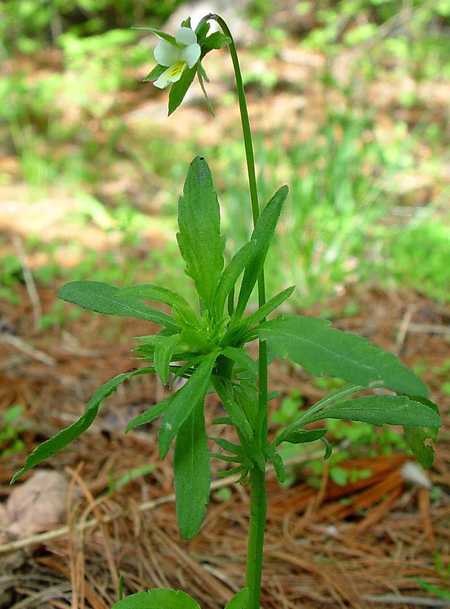
Chasmogamous flowering habit by Arthur Haines, Native Plant Trust
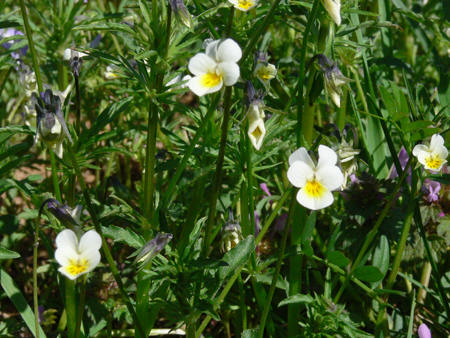
Chasmogamous flowering habit by Bruce Sorrie

Leaves by Paul Busselen, Biology Department, Katholieke Universiteit Leuven, Campus Kortrijk
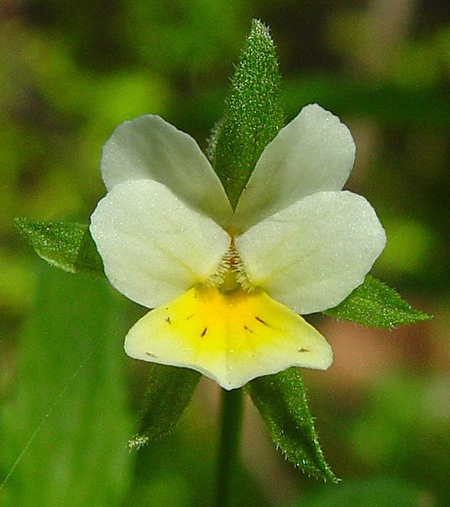
Chasmogamous flower front view by Arthur Haines, Native Plant Trust
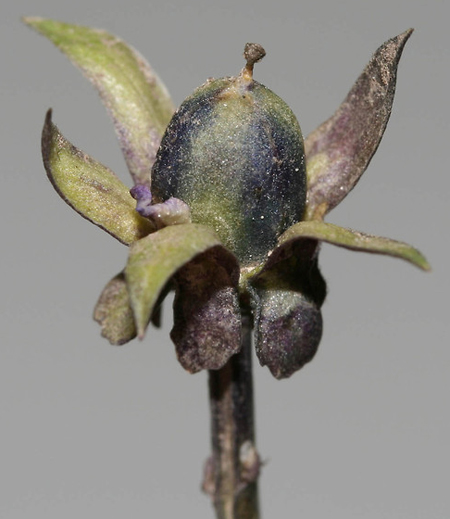
Chasmogamous fruit by Paul Busselen, Biology Department, Katholieke Universiteit Leuven, Campus Kortrijk
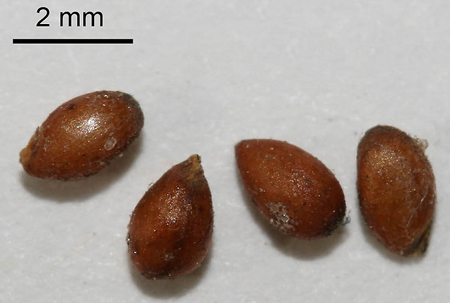
Seeds by Paul Busselen, Biology Department, Katholieke Universiteit Leuven, Campus Kortrijk
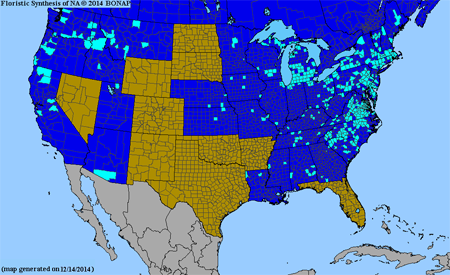
Map by Biota of North America Program